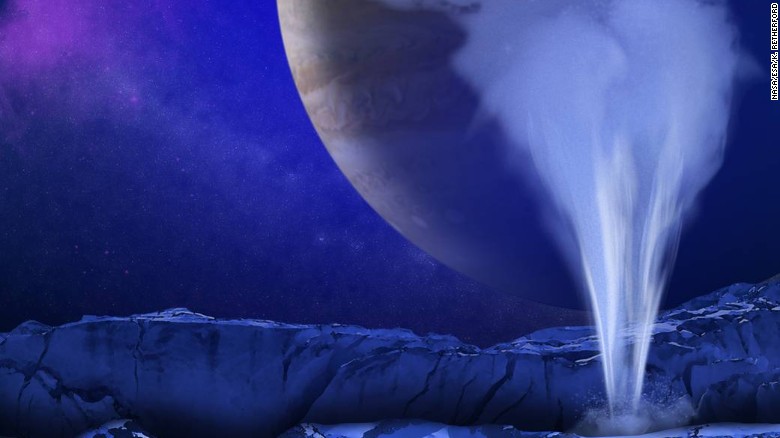Could a second celestial object in our solar system host living organisms?
NASA says its astronomers may have spotted water vapor plumes erupting on the surface of Jupiter’s moon Europa.
Europa, which is about the size of earth’s moon, is thought to be one of the most promising places to look for life in our solar system — besides Earth.
Using the Hubble Telescope, astronomers spotted plumes that are estimated to rise about 125 miles (200 kilometers) and then rain the material back down onto Europa’s surface.
“Europa’s ocean is considered to be one of the most promising places that could potentially harbor life in the solar system,” said Geoff Yoder, acting associate administrator for NASA’s Science Mission Directorate in Washington.
“These plumes, if they do indeed exist, may provide another way to sample Europa’s subsurface.”
Europa has an enormous ocean containing twice as much water as Earth’s oceans, but it’s located under a layer of hard ice of unknown thickness.

Scientists hope that the plumes will allow them to gather water samples of the water without drilling through the ice.
If the findings are confirmed, Europa would be the second moon in the solar system known to spew water plumes. NASA spotted “jets of water vapor and dust” off the surface of Saturn’s moon Enceladus in 2005.
NASA says it hopes the infrared version of its new James Webb Space Telescope, which is expected to launch in 2018, to confirm the water plume finding on Europa.
As reported by CNN
